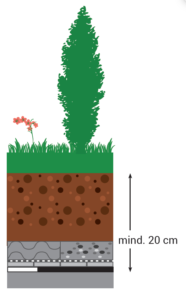In winter green roofs can retain between 25 40 of the precipitation that falls on them.
Green roof heating on winter maintenance.
The winter green roof uses evergreens juniper shrubs and a thicker soil base than typical leafy green roofs which generally provide passive benefits to the environment by reducing the need for.
With every green roof a waterproofing membrane must be installed to protect the roof material and the building underneath.
After this period ranging from anywhere from 30 days to 6 months or even 1 year ends it is up to the owner to maintain the roof.
Using green roofs in cities or other built environments with limited vegetation can moderate the heat island effect particularly during the day.
The green roof installer frequently covers maintenance of the roof for a period of time specified by the contract documents.
Test the membrane for leaks by flooding it with water prior to planting.
Extensive green roofs may require watering on a regular basis as well as the elimination of undesirable flora such as weeds from the area of the roof and the gravel or shingle perimeter.
Green roofs provide shade remove heat from the air and reduce temperatures of the roof surface and surrounding air.
Ask your landscaper to recommend one that is highly root resistant.
There are a number of membrane materials on the market.
This will enable the plants to sink their roots into the substrate.
With the proper maintenance green roofs can provide increased insulation leading to decreased heating costs during the winter months.
A green roof or rooftop garden is a vegetative layer grown on a rooftop.
Continue to inspect the membrane on a routine schedule in order to detect any leakage or drainage backup.
Of green roof markets gives new job opportunities related to manufacturing plant growth design installation and maintenance.
If this is not taken into account when the snow melts plants may not revive completely leaving patches of dead plants on the otherwise green roof.
According to a study conducted by the university of toronto during the months of january and february potential energy savings were estimated to be between 5 63 and 5 95 and up to a whopping 61 for upper level floors.
Green roofs have much lower burning heat load the heat generated when a substance burns than do conventional roofs.

